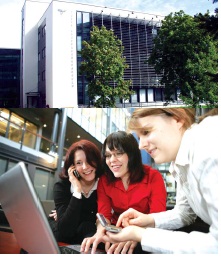This article focuses on the creation and benefits of a wireless network in the university setting that connects four universities and several companies in the Turku-region, Finland. The key aspects of this innovation network – SparkNet, which is one of the world’s largest wireless networks is illustrated and a framework is used to analyse the benefits of the network in the teaching context. SparkNet can be used in various ways to support and augment both traditional and distance teaching. The illustration is made on how an innovation affects the contexts of both teaching and e-learning

Sparknet is one of the world’s largest Wireless Local Area Network (WLAN) is a tool for university education, in a business school setting through interaction
with other university organisations and external experts.
SparkNet
Turku is the oldest city and former capital of Finland, locating in the south-west corner of the country. At present it is the fifth largest city in Finland. There are
three universities (University of Turku, Abo Akademi University, Turku School of Economics and Business Administration) and the Finland’s largest polytechnic in Turku. The university sector has 25,000 students and 400 professors. The city of Turku is concentrating on two main industries, namelyICT and biotechnology. Turku Science Park is a combination of university, industry (strong focus in start-up companies) and research related organisations developing the ICT and bio industries. SparkNet is an innovative concept, where existing networks (LAN) are used in collaboration with otherexisting networks to create a contractual-based wireless network. For the user SparkNet enables him/her to access his/ her own network and its resources (intranet, real email, file servers etc.) via other networks, which are members of the SparkNet concept. The innovation behind SparkNet is not developing new technology but to take advantage of existing infrastructure and provide customers with a service innovation meeting the real use contexts. The
features of SparkNet:
• Secure and free access to one’s own intranet through SparkNet (email, calendar, data access own servers)
• About 1300 access points (as of March 2006)
• Over 100 000 user accounts o University staff (three universities in Turku, one polytechnic) and students o Municipalities (public offices, libraries)
o Government offices (for example the Turku City council is now paperless –
they use laptops) o Private companies as users o Private companies as
SparkNet service providers (restaurants, cafés, yatching clubs, hotels)
o Roaming agreements with a number of Finnish universities
• Access through one’s existing user accounts (excluding visitors)
• Flexible infrastructure and user account management (visitors can join the network with an access code)
• Support for multiple devices (computers, laptops, mobile phones, PDAs etc.)
• Easy usage, no dedicated hardware or software required
SparkNet components:
1. Access points
2. Spark Virtual LANs
3. Authentication gateways
4. Dedicated routers connecting Spark VLANs
5. Operator selection service server Network Facilitated Learning Framework
The framework consists of three main aspects, namely digitisation, interactions and transactions. Digitisation The key issue here is that whatever can be digitised, has certain properties like it is usually costly to produce, the copying costs of it are near zero and it is easily transferable through networks. The focus should be in the application of information within the organisations; both in terms of its use as a source of value added for existing processes and to the extent it can enhance those processes.
• SparkNet offers access to own digital content while out-ofoffice. It also allows access to any electronic data sources (elibraries, large on-line business
data-bases etc.), which require access rights. Thus, it also helps in creating and sharing new digital information/knowledge.
• Same applies in the creation of new digital products/services. For instance, start-up company focused training can be partly moved to the digital domain.
Transactional Approaches There are two variations of transactional approach. The first one, called hierarchical approach, has a very strong focus on minimising transaction costs and strengthening or retaining power relationships within the organisation and with other organisations. The second variation is called co-operative transactional approach.
• SparkNet fulfils the traditional role of ICT in increasing efficiency without changing any hierarchical structures (i.e. the universities continue their operations the normal way, but increased access possibilities for staff and students for example raise efficiency)
• SparkNet offers totally new ways for co-operation between universities (and companies). For instance, access to own digital content (e-mails, documents etc.) while visiting other universities makes teaching and meetings more efficient. Interaction-based Approach Interaction can be communication or
using an interactive system, but the important aspect is that what is conveyed during the interaction is in digital form or interaction is assisted by digitisation.
• SparkNet offers both efficiency in interacting with traditional partners as well as a new interaction channel for previously separate organisations, such as
universities and start-up companies. Facilitating learning in a modern way
SparkNet can be used in various ways. In creating a learning






















